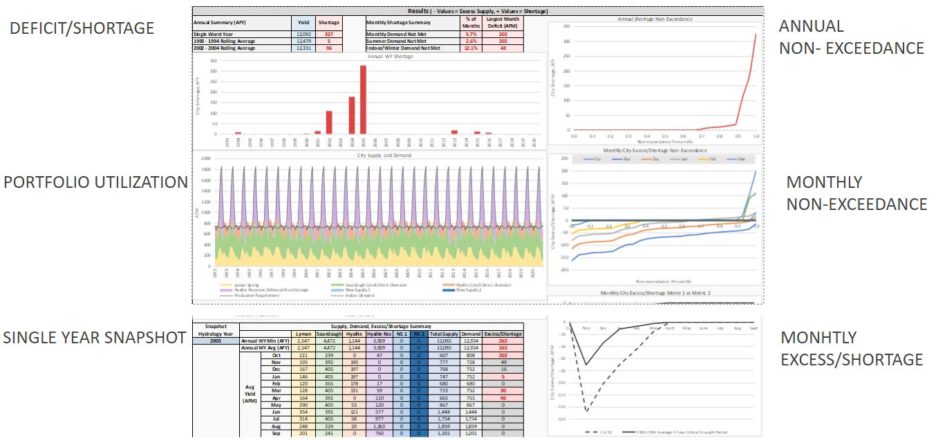In mid-June, major flooding impacted several river systems across Montana, including the Gallatin and Yellowstone Rivers near Bozeman. The flooding caused devastating erosion and temporary closure of Yellowstone Park. In the last decade the Bozeman region has been experiencing more drought than flooding. City leaders have been focused for several years on long-term water conservation and drought mitigation plans in the midst of record population growth. In fact, Montana experienced serious drought conditions in 2021.
Bozeman faces several water supply challenges, including its location which is not near a large body of water, no available groundwater source, and the Gallatin River basin is a closed basin, which means it is virtually impossible to establish new water rights. However, the City does have two high-quality surface water sources and Lyman Spring located in the headwaters of the Upper Missouri River. All three sources are primarily fed by snowmelt. The three sources are also susceptible to drought risk that could be exacerbated by climate change. Therefore, the City of Bozeman has focused on careful water planning and management to ensure there is enough water for the future.
In a proactive move, the City commissioned an Integrated Water Resources Plan after population growth began to rapidly increase in 2014. The community is currently the fastest growing city of its size in the United States. Trends indicated Bozeman’s water demand would exceed the City’s finite supply of appropriated water rights if action wasn’t taken. The resulting Integrated Water Resources Plan, produced by AE2S and Jacobs, assessed existing water rights, established the water supply requirements over 30-year and 50-year planning horizons, and identified alternatives to meet future objectives.
In 2020, the City of Bozeman further invested in its water future by commissioning a Water Supply Optimization and Management Tool from AE2S and Jacobs. The Integrated Water Resources Plan led the City to form a Water Conservation Department and paved the way for several water supply and demand studies and projects. A drought management model and an instrumentation and controls project helped Bozeman optimize its use of Lyman Spring.
Using the knowledge and experience gained through more than a decade of service to the City of Bozeman, Jacobs and AE2S created the Water Supply Optimization and Management Tool using a quantitative and defensible reliable yield model. “The Water Supply Optimization and Management Tool integrates physical hydrologic yield, legal availability, infrastructure constraints, and system-wide demand on a monthly timestep to better define reliable supply and demand. It also forecasts deficits under varying hydrologic and population growth scenarios,” explains Zach Magdol, AE2S Bozeman Operations Manager.
The Water Supply Optimization and Management Tool has allowed the City of Bozeman to determine that under current operational, hydrologic, and population growth conditions, it will lack reliable water supply during the winter months within the next 10 to 15 years. To exacerbate the issue, Bozeman currently has limited raw water storage capacity, particularly in the winter, which makes it more reliant on snowpack than most mountain-west communities. The Water Supply Optimization and Management Tool has also provided clear and defensible evidence that increasing reservoir storage or developing new storage capacity is a simple, near-term solution. Longer-term recommendations that have come out of the Water Supply Optimization and Management Tool include developing a completely new water source out of the Gallatin basin, as well as exploring the feasibility of aquifer storage and recovery.

